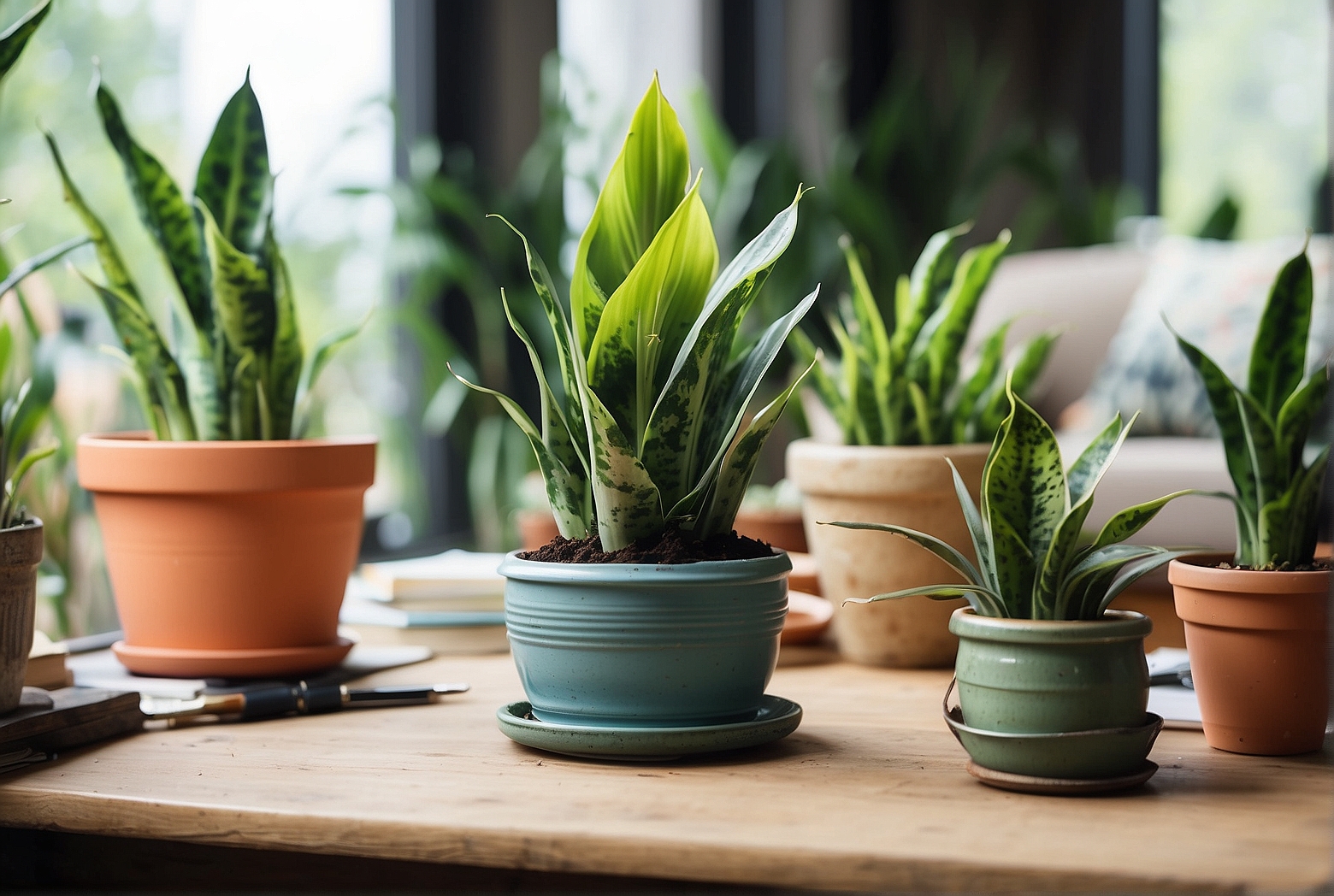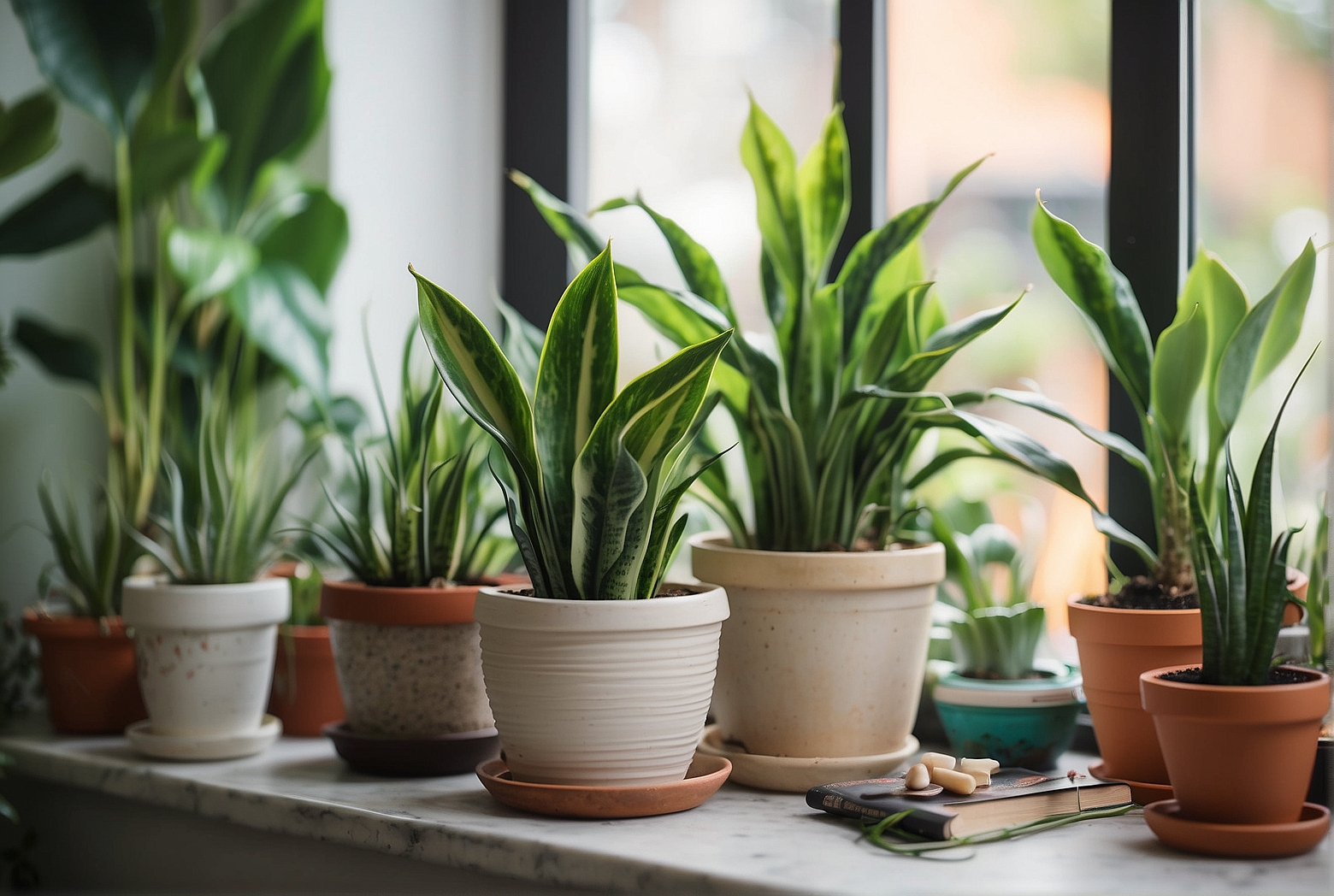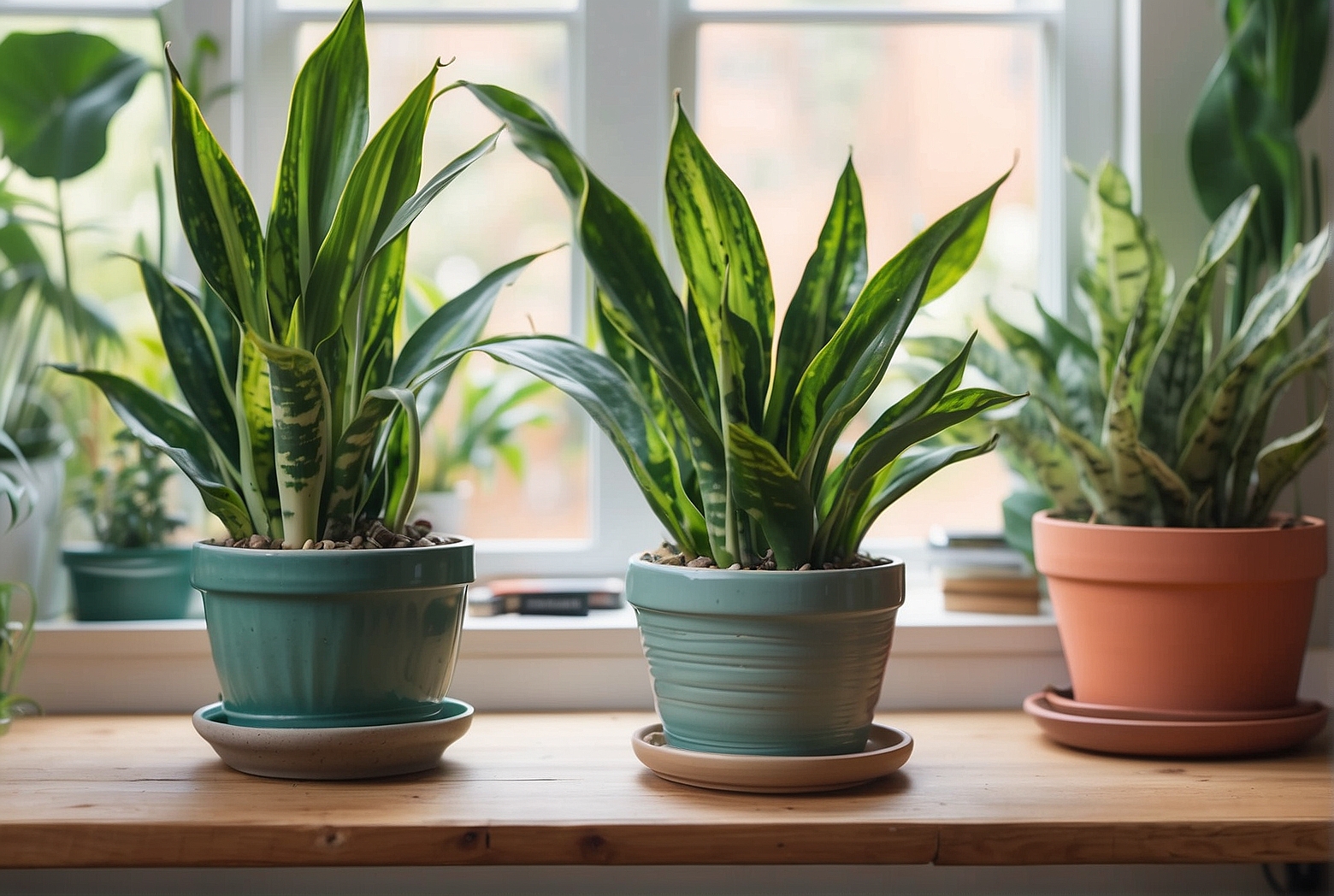Last Updated on April 9, 2024 by Tony Manhart
Are you a proud snake plant owner looking to maintain the health and beauty of your beloved plant? Look no further! In this easy-to-follow article, we will guide you through the step-by-step process of trimming your snake plant. From identifying the right time to trim, to selecting the proper tools and techniques, we’ve got everything you need to know to keep your snake plant thriving. So grab your gardening gloves and let’s get started on this exciting plant care adventure!
Step 1: Gather the necessary tools and materials
To start trimming your snake plant, you’ll need a few essential tools and materials. First, make sure you have a pair of pruning shears or sharp scissors. These will help you make clean cuts and avoid damaging the plant. Next, grab some rubbing alcohol or disinfectant spray to sanitize your tools before and after trimming. This step is crucial to prevent the spread of any potential diseases or pests. Lastly, have a clean cloth or a stack of paper towels ready to wipe your tools and keep your work area tidy throughout the process.
Step 2: Choose the right time to trim
Timing is everything when it comes to trimming your snake plant. The best time to do this task is during the spring or early summer months. This period allows the plant to recover faster from the pruning stress and promotes healthy growth. It’s crucial to avoid trimming during the winter months when the plant goes into a dormant phase. Additionally, stay away from trimming during the flowering period to not disrupt or hinder the plant’s blooming cycle.
Step 3: Prepare the snake plant for trimming
Before you start trimming, it’s essential to prepare both yourself and your tools. Begin by washing your hands thoroughly with soap and warm water. This step helps prevent the transfer of any potential contaminants to the plant. Next, disinfect your pruning shears or scissors using rubbing alcohol or a disinfectant spray. This process eliminates any bacteria or fungi that may be present on the tools. Lastly, create a clean work area by wiping down surfaces and ensuring you have enough space to maneuver comfortably.

Step 4: Identify the areas to trim
Take a careful look at your snake plant and identify the areas that need trimming. Inspect each leaf and search for any damaged or yellowing leaves. These are usually a sign of poor health or an infestation. Additionally, keep an eye out for overgrown or overcrowded areas. Snake plants can grow quite densely, and it’s crucial to create space for new growth and maintain an aesthetically pleasing appearance.
Step 5: Start trimming the snake plant
Once you’ve identified the areas to trim, it’s time to start the actual pruning process. Start by trimming individual leaves that show signs of damage, yellowing, or drying. Using your pruning shears or sharp scissors, make a clean cut as close to the base of the plant as possible. Removing these unhealthy leaves will encourage new growth and help the overall health of the plant. Be cautious not to damage any nearby leaves or stems during this process.
Step 6: Trim overcrowded areas
In addition to trimming individual leaves, it’s essential to address overcrowded areas within the snake plant. Remove excess leaves that are growing too closely together, creating a crowded appearance. By doing so, you’ll create space between the leaves and allow each one to receive sufficient light and airflow. This action not only improves the plant’s overall health but also helps it maintain a balanced and aesthetically pleasing look.
Step 7: Disinfect your tools after trimming
After you’ve finished trimming, it’s crucial to disinfect your tools to prevent the spread of any potential diseases or pests. Clean your pruning shears or scissors using rubbing alcohol or a disinfectant spray. This step ensures that your tools are free from any pathogens that could harm the plant during future use. Once disinfected, wipe the tools dry with a clean cloth or paper towel to prevent rust or damage.

Step 8: Clean up the trimmed leaves
Cleaning up the trimmed leaves is an essential part of the trimming process. Collect all the leaves you’ve trimmed and discard them appropriately. Leaving the trimmed leaves lying around can create a messy appearance and potentially attract pests to your plant. Properly disposing of the trimmed leaves helps maintain a clean and tidy appearance for your snake plant.
Step 9: Water the snake plant properly
After the trimming process, it’s crucial to water your snake plant correctly. First, check the moisture levels of the soil by inserting your finger about an inch deep. If the soil feels dry, it’s time to water your plant. However, be cautious not to overwater the snake plant, as it can lead to root rot. Water moderately, allowing the soil to slightly dry out between watering sessions. This practice promotes healthy growth and prevents any water-related issues that could harm the plant.
Step 10: Maintain regular care and monitoring
Trimming your snake plant is just one aspect of its overall care and maintenance. To ensure the plant thrives, it’s essential to maintain regular care and monitoring. Keep a consistent watering schedule, allowing the soil to naturally dry out before watering again. Additionally, check for signs of growth or health issues regularly. Look for new leaves sprouting from the center and ensure the existing leaves look vibrant and healthy. Finally, provide appropriate lighting and temperature conditions for your snake plant, as these factors play a significant role in its overall well-being.
By following these step-by-step instructions and giving your snake plant the care it deserves, you’ll help it thrive and maintain its beauty for years to come. Remember to trim your snake plant during the appropriate season, gather the necessary tools, and follow the proper techniques to ensure a successful trimming journey. Happy trimming!
Tony Manhart is a passionate gardener who has been tending to gardens for over 20 years. He takes pride in creating beautiful outdoor spaces with plants, trees, and shrubs that can thrive in any environment. He loves to share his knowledge with others and has taught classes on gardening basics and advanced techniques. He is committed to sustainability, using natural and organic methods to create and maintain gardens. He also works with local organizations to create green spaces for communities. When he’s not gardening, Tony enjoys hiking, reading, and spending time with his family.


